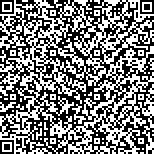| 引用本文: | 胡慧明,翁家俊,朱彦陈,邵峰,崔粲,曾英姿,吕圭源.基于数据挖掘的《中医方剂大辞典》含山楂组方用药规律研究[J].中国现代应用药学,2021,38(21):2713-2720. |
| HU Huiming,WENG Jiajun,ZHU Yanchen,SHAO Feng,CUI Can,ZENG Yingzi,LYU Guiyuan.Analysis on composition principles of formulae containing Crataegi Fructus in dictionary of traditional Chinese medicine prescriptions based on data mining[J].Chin J Mod Appl Pharm(中国现代应用药学),2021,38(21):2713-2720. |
|
| |
|
|
| 本文已被:浏览 1620次 下载 1063次 |

码上扫一扫! |
|
|
| 基于数据挖掘的《中医方剂大辞典》含山楂组方用药规律研究 |
|
胡慧明1, 翁家俊2, 朱彦陈3, 邵峰4, 崔粲1, 曾英姿5, 吕圭源6
|
|
1.南昌医学院, 南昌 330004;2.北京大学中医药临床医学院(西苑), 北京 100091;3.江西中医药大学计算机学院, 南昌 330004;4.江西中医药大学现代中药制剂教育部重点实验室, 南昌 330004;5.南昌济顺制药有限公司, 南昌 330115;6.浙江中医药大学, 杭州 310053
|
|
| 摘要: |
| 目的 通过分析《中医方剂大辞典》中含有山楂方剂的组方用药规律,为指导临床合理用药及山楂的深入研发提供参考。方法 收集整理《中医方剂大辞典》中含有山楂的方剂,并构建临证方药数据库,运用SPSS Statistics 22.0和IBM SPSS Modeler 18.0软件对其进行频次统计、关联规则和聚类分析等数据挖掘。结果 根据纳入及排除标准进行筛选,收集含山楂方剂共1 088首,涉及主治病证共224种,其中高频病证(≥ 16)主要为"食积""痘疮""痢疾""脾胃虚弱"等;组方中使用频次≥ 200次的药物有19味,使用频次较高的有陈皮、甘草、神曲,用药种类以理气药、消食药、补虚药为主,药性以温性药使用频率最高,药味则多选用辛、苦、甘味,药物归经使用频次较高的是脾、胃、肺、肝经;对高频病证和性味归经采用关联规则及聚类分析,显示山楂在不同疾病和配伍中可发挥不同功效。结论 《中医方剂大辞典》中含山楂方剂临床应用广泛,不仅可用于肉食积滞和瘀血阻滞所致各种病证,还可用于痘疮、感冒、痧胀、麻疹等外感及皮肤病证,突破了山楂在现代中医药临床及实验研究中的局限性。运用关联规则及聚类分析技术挖掘高频病证的组方配伍规律,客观、直观、科学地体现了山楂在具体病证中发挥的独特功效与优势,对指导山楂中医临床合理应用、保健食品的开发及中药新药研发具有重要意义,并有助于推动我国中医药大健康产业的发展。 |
| 关键词: 山楂 《中医方剂大辞典》 关联规则 聚类分析 组方规律 |
| DOI:10.13748/j.cnki.issn1007-7693.2021.21.014 |
| 分类号:R282.7 |
| 基金项目:国家重点研发计划项目(2019YFC1712301);江西省重点研发计划项目(20201BBG71005);江西省药品监督管理局科研项目(2019JS20);江西中医药大学博士启动基金(2018WBZR016);江西中医药大学1050人才工程 |
|
| Analysis on composition principles of formulae containing Crataegi Fructus in dictionary of traditional Chinese medicine prescriptions based on data mining |
|
HU Huiming1, WENG Jiajun2, ZHU Yanchen3, SHAO Feng4, CUI Can1, ZENG Yingzi5, LYU Guiyuan6
|
|
1.Nanchang Medical College, Nanchang 330004, China;2.Peking University Traditional Chinese Medicine Clinical Medical School(Xiyuan), Beijing 100091, China;3.College of Computer Science, Jiangxi University of Chinese Medicine, Nanchang 330004, China;4.Key Laboratory of Modern Preparation of TCM, Ministry of Education, Jiangxi University of Chinese Medicine, Nanchang 330004, China;5.Jishun Pharmaceuticals, Nanchang 330115, China;6.Zhejiang Chinese Medical University, Hangzhou 310053, China
|
| Abstract: |
| OBJECTIVE To analyze the composition regularity of formulae containing Crataegi Fructus in Dictionary of Traditional Chinese Medicine Prescriptions, which provide reference for the guidance of clinical rational application and the further research and development of Crataegi Fructus. METHODS To collect the prescriptions containing Crataegi Fructus in Dictionary of Traditional Chinese Medicine Prescriptions, construct the database of clinical prescriptions, and use the software of IBM SPSS modeler 18.0 and SPSS statistics 22.0 to analyze the data of the frequency statistics, apriori algorithm and cluster analysis. RESULTS According to the inclusion and exclusion criteria, 1 088 prescriptions containing Crataegi Fructus were finally qualified, including mainly for 224 kinds of diseases. Among of them, the high frequency major syndrome and disease (frequency ≥ 16) were food stagnation, variola, dysentery and weakness of spleen and stomach. The data showed that there were 19 kinds of Chinese medicines frequency ≥ 200, and Citri Reticulatae Pericarpium, Glycyrrhizae Radix et Rhizoma and medicated leaven were used more frequently. The main types of medicines were qi-regulating medicine, food-digesting medicine and deficiency-tonifying medicine. In terms of properties, medicinals with warm nature were most frequently used. In terms of flavor, pungent, bitter and sweet medicinals were used often. According to meridian tropism, spleen, stomach, lung, liver meridian were used more frequently. The data of apriori algorithms and cluster analysis used for high-frequency disease showed Crataegi Fructus had apparently diverse effects in different diseases and compatibility. CONCLUSION Crataegi Fructus formula contained in the dictionary of Traditional Chinese Medicine has been widely used in clinic. They can be used not only for various diseases caused by stagnation of meat and blood stasis, but also for exogenous and skin diseases such as small pox, cold, sha tympany, and measles, breaking through the limitations of Crataegi Fructus in clinical and experimental research of modern traditional Chinese medicine. Using association rules and cluster analysis technology to mine the compatibility rules of high-frequency diseases and syndromes, it objectively, intuitively and scientifically reflects the unique efficacy and advantages of Crataegi Fructus in specific diseases and syndromes. It is of great significance to guide the rational clinical application of hawthorn Chinese medicine and develop health food and new Chinese medicine. What's more, it is helpful to promote the development of Chinese medicine great health industry in China. |
| Key words: Crataegi Fructus dictionary of Traditional Chinese Medicine prescriptions apriori algorithms cluster analysis medication regularity |
|
|
|
|
